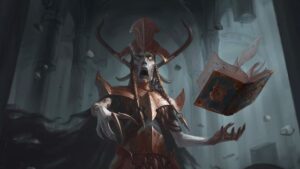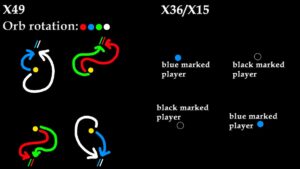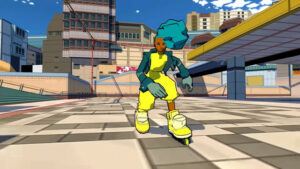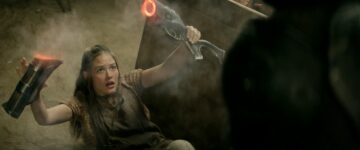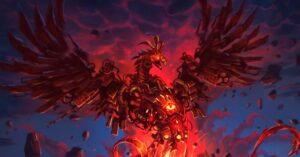A doppelgänger is a kind of mirror. Literally, of course that makes sense: The German compound word, first published in a 1796 novel, combines the terms for “double” and “walker,” suggesting someone’s duplicate out and about in the world. But figuratively, just as a mirror has the ability to both reflect and distort, so does the doppelgänger — who is neither a twin, nor a clone. The existence of someone who looks like you but isn’t you hits on a deeper, more visceral level, and the concept has been spooking people for centuries. First as a literary device, as in Fyodor Dostoyevsky’s The Double and Robert Louis Stevenson’s Strange Case of Dr Jekyll and Mr Hyde — and since it jumped to the silver screen, as a common horror trope.
As a figure of myth and folklore, the doppelgänger has been floating around our nightmares for a while, and its prevalence raises questions about ourselves. Are we really unique, singular, or autonomous if someone whom we don’t know, but who has our same face, is alive at the same time we are? Our individual identities are theoretically the only things we truly own; we’re born with them, and we die with them. And yet the presence of another person with that same physicality is — as Sigmund Freud described in his culture-shaking 1919 essay — “uncanny.” Is the double a manifestation of our repression of fear? Is it a way for us to cheat death? Or does a doppelgänger actually make real our death by suggesting that a part of us which we cannot control will live on after we’re gone?
Horror loves Freud’s latter suggestion, and the genre has been particularly creative in its imaginings of the doppelgänger figure. As film critic and scholar Steven Schneider wrote in his 2001 Film and Philosophy article “Manifestations of the Literary Double in Modern Horror Cinema,” the genre has invented not just physical copies (“murderous alter egos, monstrous shape-shifters, maniacal twins, or malevolent clones”) but also “mental doubles,” which Schneider categorizes as “schizos, shape-shifters, projections, and psychos.” Whether the doppelgänger manifests as a mimicry of the body or brain, few things are scarier than the simultaneous knowing and not knowing of yourself.
All of this is to say that in horror — which often pits an individual against an unknowable, mysterious, supernatural, or otherworldly entity — the doppelgänger is unique in that it makes our enemies versions of ourselves. With this trope established in the early 20th century, horror has freely overlapped with other genres that ground the doppelgänger in established realism, resulting in films that are equally inward-gazing and outwardly focused.
Both Walter Wanger’s 1956 original version of Invasion of the Body Snatchers and Steven Spielberg’s 1978 remake combine horror with sci-fi to create “pod people” — emotionless, empty, and exactly like us in looks. All three versions of The Thing (the 1951 original The Thing from Another World, the 1982 practical-effects classic from John Carpenter, and the 2011 not-quite-different-enough prequel) present an alien entity that can mimic, mutate, and use our physiology in a purely utilitarian, wholly unsentimental way. The Davids (Cronenberg and Lynch) put an unsettlingly surreal spin on the subgenre with films like The Brood, Lost Highway, and Mulholland Drive, which reiterated Freud’s theories about how emotional devastation and trauma are key to the uncanny. And more recently, Natalie Portman got down with doppelgängers twice in Black Swan and Annihilation, while Jordan Peele (who evoked spooky-suburbia classic The Stepford Wives in his first directorial effort Get Out) disrupted pleasant neighborhoods once again with his kill-happy Tethered in Us.
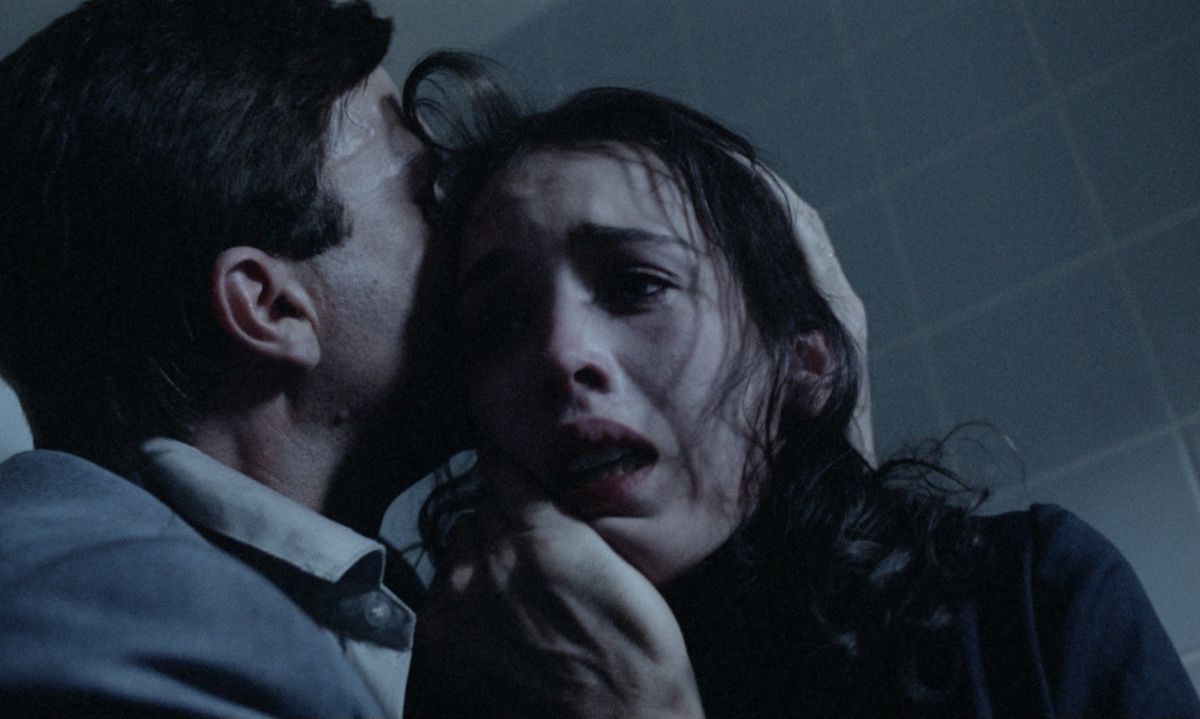
What it means to be human, and how we know if someone is or isn’t, becomes the prevailing question of many of these hybrid offerings — and perhaps no film has been as unrelentingly gross in its exploration of this concept than Possession. Initially reviled, subsequently admired, and currently the recipient of a 4K restoration and nationwide rerelease, Andrzej Żuławski’s 1981 film is as uncomfortable as it is brilliant.
Watching Possession feels like sitting at a restaurant next to a couple mid-fight and trying not to eavesdrop as they too-loudly lob accusations at each other over appetizers, fume silently through entrees, weepingly apologize to one another while sharing a dessert, and eventually leave separately, maybe returning to different lovers, when the ordeal is done. It doesn’t seem like horror at first, but Żuławski is a master at crafting tension, and incrementally introducing details that add up to a grander, more agonizing whole. The result is that Possession is simultaneously incredibly performative and disquietingly intimate, and its horrors come not just from a character called The Creature but also from the realization that sometimes the person you love most in the world might not care for you much at all.
That duality of brutality and fragility runs throughout every frame of Possession, which was written by Żuławski and Frederic Tuten while the former was in the middle of a divorce from actress Malgorzata Braunek. (She starred in his previous films, other sort-of horrors The Third Part of the Night and The Devil.) In Possession, married couple Mark (Sam Neill) and Anna (Isabelle Adjani) occupy the same apartment in West Berlin, but are no longer the same in-love pairing they once were. “Maybe all couples go through this,” she wonders as they lay in bed together, but this impasse doesn’t feel surmountable. It feels like the end.
Controlling, obsessive Mark, who Neill plays with a blustering, bombastic energy that eventually gives way to jarred shock and sensual slyness, refuses to let the relationship go. He’ll do anything to get Anna back — confront her lover Heinrich (Heinz Bennent), hire a PI (Carl Duering) to trail her — but then, something strange happens. Mark meets their son Bob’s (Michael Hogben) teacher Helen (also played by Adjani), who looks just like Anna, but with lime green eyes. And then, something stranger: Anna is hiding a secret apartment in a derelict building in a run-down part of town, the kind of place you go to disappear. Who, or what, is she meeting there?
Thanks to an array of boundary-pushing horrors ranging from Lovecraftian (the aforementioned Creature) to more upsettingly earthly (domestic violence, self-harm, and miscarriage), Possession was heavily edited down for initial U.S. release and banned in the U.K. The crisp visuals and vibrant shades of this 4K restoration are a revelation. Every scene is emotionally overwrought, complementing the film’s obsession with inexplicable extremes. Adjani’s and Neill’s performances are gruelingly physical, including the infamous subway scene that cements Adjani’s work here as one of horror’s all-time-great hysterical women. The film’s focus on the madness-inducing effects of engineering a doppelgänger (so many dismembered limbs!) is what makes Possession so unique in its approach to this trope.
What goes into crafting another person, especially another person who is a copy of someone else? What are the spiritual and physical tolls of that? Is wanting to spend your life with a better version of someone you love an empathetic desire, or a delirious one? Other films have followed in the doppelgänger mold since Possession, but all of them are operating in the shadow of this film’s bleak, grim, grotesque legacy, which suggests that the fashioning of a double is an act of exploitation as destructive as a failed marriage. Many horror films have explored the trespass upon reality that a doppelgänger provides, but few have done it with as much blood, sweat, and bodily fluids as the unshakably upsetting Possession.
Possession is playing in theaters nationwide, and streaming exclusively on Metrograph.com through Oct. 31.
Source: https://www.polygon.com/22740902/possession-review-horror-movie-doppelgangers
- 4k
- aforementioned
- alien
- All
- anna
- around
- article
- autonomous
- berlin
- blood
- body
- Building
- care
- case
- cinema
- Common
- Compound
- Couple
- Creative
- CRISP
- derelict
- Domestic Violence
- Duality
- Early
- energy
- Engineering
- exploration
- Face
- Figure
- Film
- films
- First
- Focus
- Green
- head
- here
- hire
- How
- HTTPS
- human
- Hybrid
- Including
- IT
- Key
- Level
- lime
- love
- man
- mark
- mirror
- MIT
- Modern
- Offerings
- operating
- Other
- People
- physical
- Playing
- possession
- present
- raises
- Reality
- relationship
- restaurant
- ROBERT
- s
- Screen
- sense
- Shadow
- Silver
- So
- son
- spend
- Spin
- streaming
- supernatural
- teacher
- The
- the world
- theoretically
- time
- U.K.
- u.s.
- unique
- us
- West
- What
- WHO
- Women
- Work
- world
